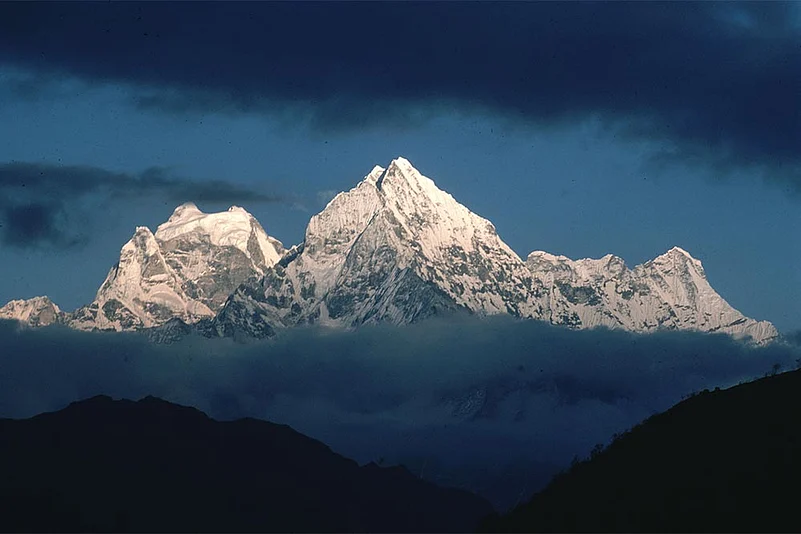About halfway through Himalaya, it feels like the sixth day of a long trek. By then, all city sounds have slowly seeped out of you, all man-made structures have gradually crumbled in your memory, the office is a place someone else goes to. All that matters is the next step—sometimes in sheer fatigue, almost giving up as the peak seems insurmountable, sometimes in utter exhilaration as the next halt is just round the corner. You become one with the serene rivers, the chattering trees, the loud waterfall, the unending meadows, the sombre lakes, with the barking deer, the scarlet minivet, with the Trishul and Panchachuli, with the rare air, clear blue skies and fire-fly like stars.
Namita Gokhale is Kumaoni who spent her childhood in Nainital gazing at Nanda Devi on clear days and Ruskin Bond is a Garhwali, well practically, having made Landour his home from the days when he could get there only on mule-back from Mussoorie. The editors know their Himalayas and this anthology has a firm, well-trodden quality about it, like a seasoned trekking guide sure of his paths. So, when you have just finished reading explorer Sven Hedin’s Between Wolves and Shipwreck, about his adventures in Ladakh in 1906, there is a piece by Heinrich Harrer, the Austrian climber who, along with Peter Aufchnaiter, escaped from prison in India to reach Lhasa (his journey is immortalised in Seven Years in Tibet), written 40 years later, where Harrer describes being chased by bloodthirsty bandits in high snows, and says about a particularly tough landscape: “First put on the map by Sven Hedin, this pass—the Sela-la—leads to Shigatse”.
It’s clever, too, to divide the many pieces under Adventures, Meditations and Life, the three broad themes that exist, often together, in the mountains. In the first section, there is the riveting account by the Japanese Buddhist monk Ekai Kawaguchi, who fights hunger, thirst and the freezing cold, along with his pet sheep, and who is finally saved by a generous yak-herding family. There is an incredible account by British mountaineer Aleister Crowley in ‘Mutiny on Kanchenjunga’, who led the first-ever expedition to the peak, and which ends in disaster. It can be a case study in B-schools about handling a crisis—how best-laid plans can go wrong, how ignoring standard operating procedures can be fatal and how egos can destroy well-knit teams. Then there are celebrated pieces, like an excerpt from Mark Twain’s Following the Equator (1897), called ‘The Train to Darjeeling’, and one from Edmund Hillary’s High Adventure: The True Story of the First Ascent of Everest.
Right upfront in Meditations is the soaring piece by poet Arundhathi Subramaniam, a sublime description of what it takes on the body and the mind to trek to the ethereal Kailash. A hundred questions arise in her mind, a few of them are answered, as she finally finds the mountain, and her guru. There is a revealing excerpt from Swami Vivekananda on himself, in which he struggles with the rigours of monasticism. “I was about a couple of miles from Vrindavan when I found a man smoking on the roadside, and I was seized with a desire to smoke. I said to the man, ‘Hallo, will you let me have a puff at your chillum?’”, writes Swamiji. There is Peter Matthiessen’s distilled thoughts in an excerpt from his classic The Snow Leopard, a piece which could fall under both meditations and adventure, where he muses about the Yeti. There is also a very informative article by Frank S. Smythe, credited with discovering the Valley of Flowers in Garhwal, who also nearly comes face to face with the Abominable Snowman. There is a delightful piece by the inimitable Ruskin Bond, thinking about his beloved Himalayas while travelling between Goodge Street and Tottenham Court Road stations on the London Tube. There is plenty more in this thick anthology—it’s a perfect antidote if you are suffering from Trumphilitis.



























